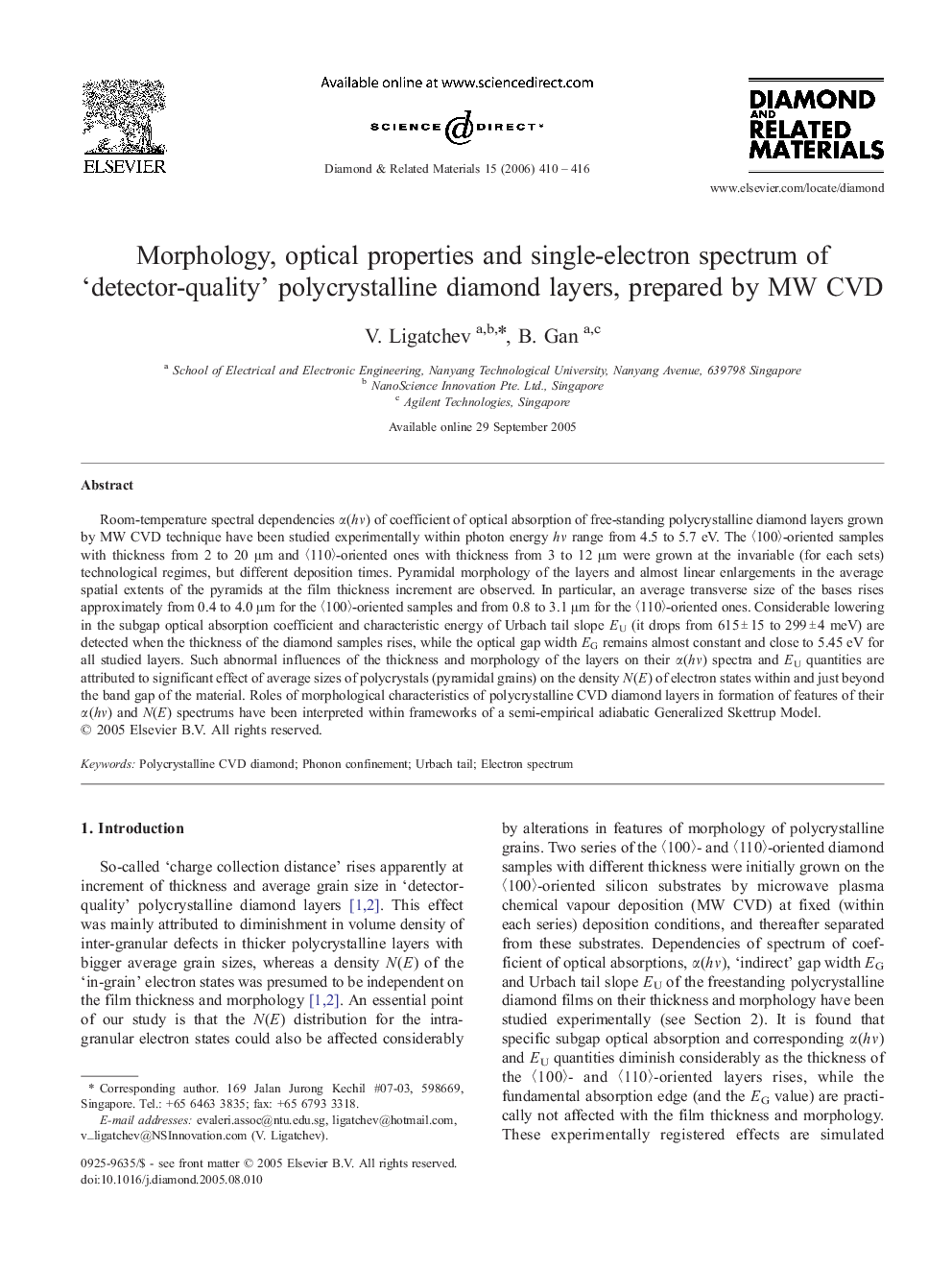| Article ID | Journal | Published Year | Pages | File Type |
|---|---|---|---|---|
| 703766 | Diamond and Related Materials | 2006 | 7 Pages |
Room-temperature spectral dependencies α(hν) of coefficient of optical absorption of free-standing polycrystalline diamond layers grown by MW CVD technique have been studied experimentally within photon energy hν range from 4.5 to 5.7 eV. The 〈100〉-oriented samples with thickness from 2 to 20 μm and 〈110〉-oriented ones with thickness from 3 to 12 μm were grown at the invariable (for each sets) technological regimes, but different deposition times. Pyramidal morphology of the layers and almost linear enlargements in the average spatial extents of the pyramids at the film thickness increment are observed. In particular, an average transverse size of the bases rises approximately from 0.4 to 4.0 μm for the 〈100〉-oriented samples and from 0.8 to 3.1 μm for the 〈110〉-oriented ones. Considerable lowering in the subgap optical absorption coefficient and characteristic energy of Urbach tail slope EU (it drops from 615 ± 15 to 299 ± 4 meV) are detected when the thickness of the diamond samples rises, while the optical gap width EG remains almost constant and close to 5.45 eV for all studied layers. Such abnormal influences of the thickness and morphology of the layers on their α(hν) spectra and EU quantities are attributed to significant effect of average sizes of polycrystals (pyramidal grains) on the density N(E) of electron states within and just beyond the band gap of the material. Roles of morphological characteristics of polycrystalline CVD diamond layers in formation of features of their α(hν) and N(E) spectrums have been interpreted within frameworks of a semi-empirical adiabatic Generalized Skettrup Model.
